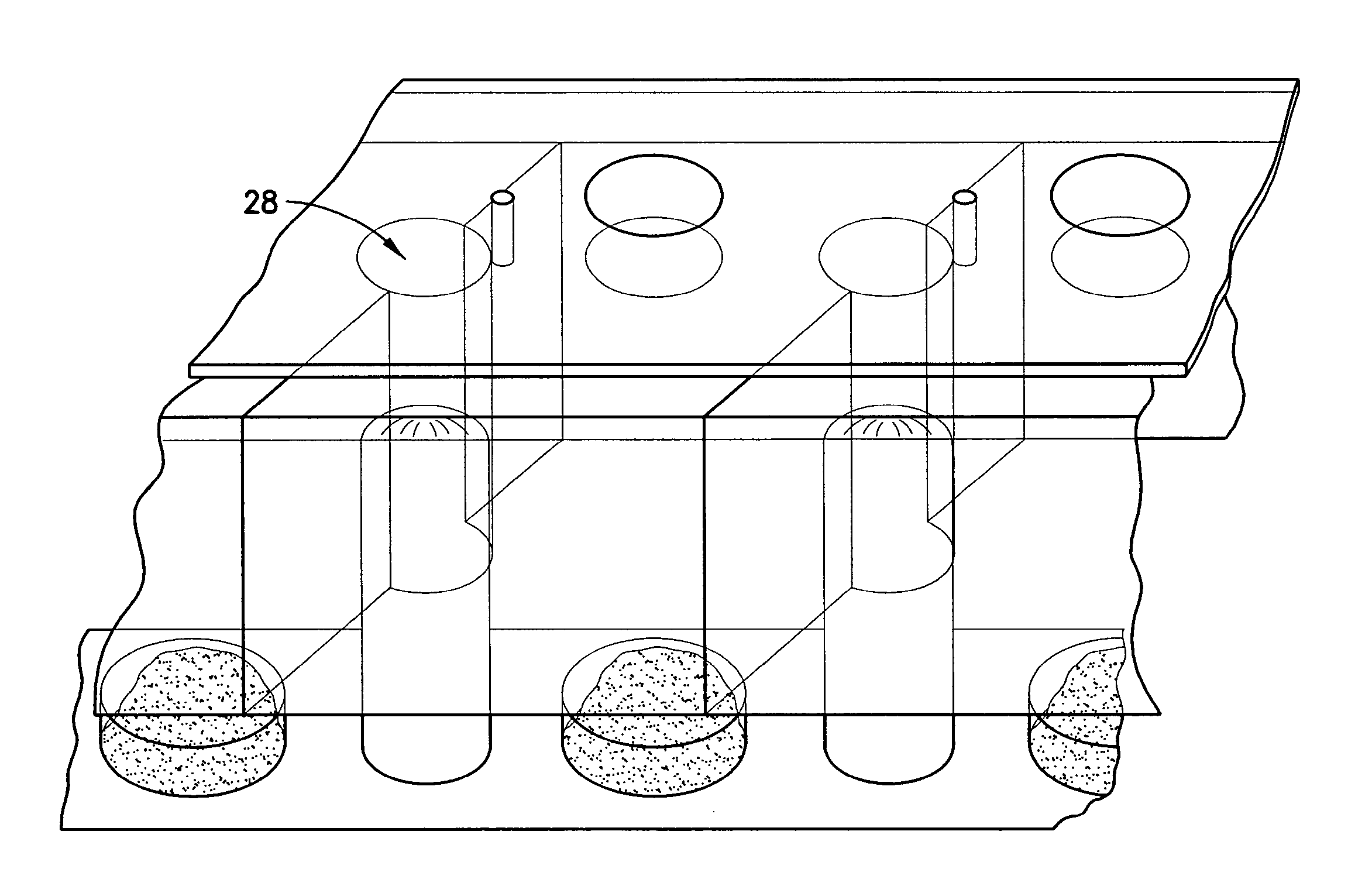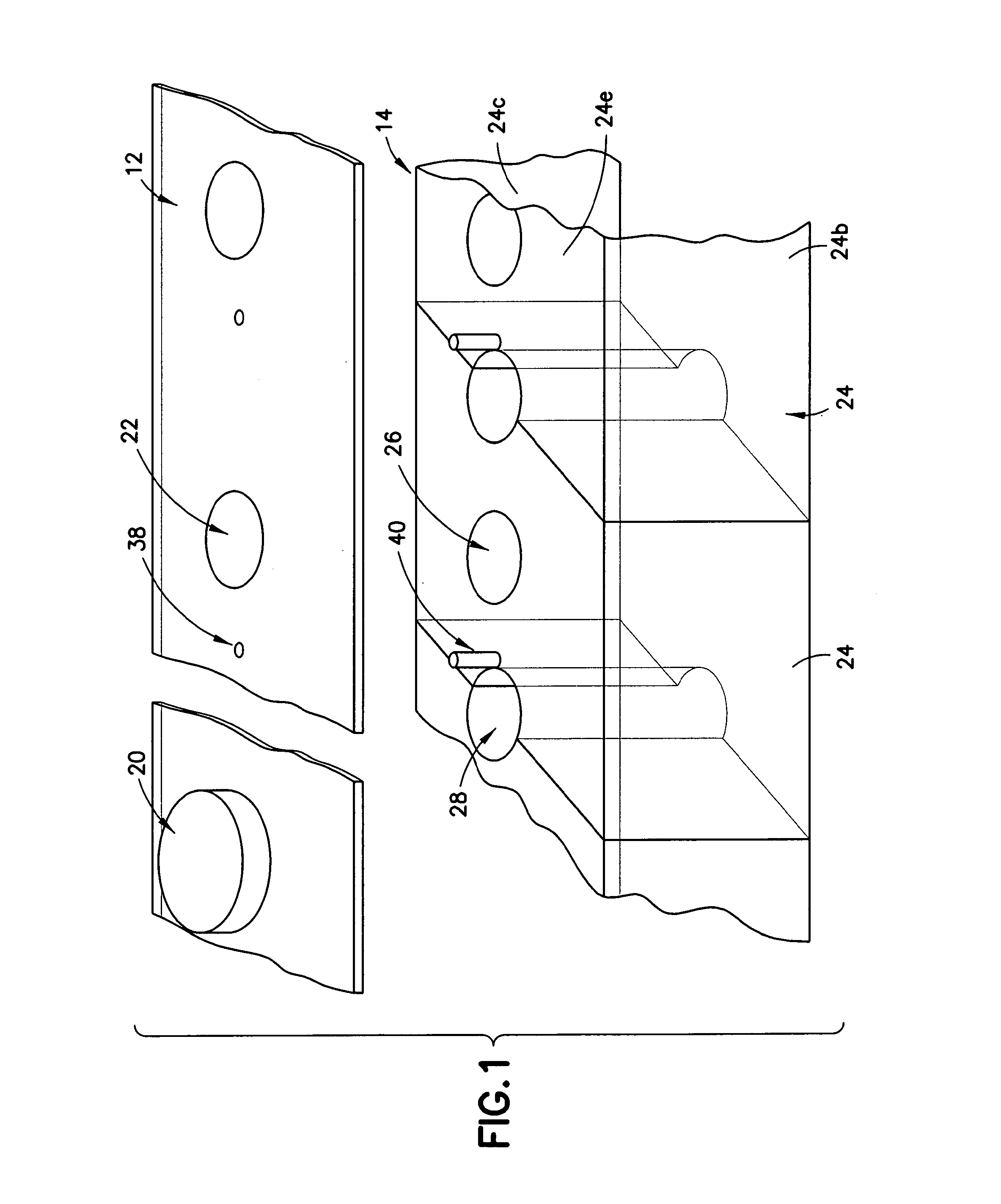Bacterial detection cartridge
a technology of bacteria and detection cartridges, applied in the field of bacteria detection cartridges, can solve the problems of difficult and time-consuming addition steps required to segregate blood/media samples into smaller volume samples, and the death of patients, so as to reduce the time-to-detection
- Summary
- Abstract
- Description
- Claims
- Application Information
AI Technical Summary
Benefits of technology
Problems solved by technology
Method used
Image
Examples
Embodiment Construction
[0036]Referring generally to FIGS. 1-5, a bacterial detection cartridge 10 according to an embodiment of the invention generally includes a cartridge lid assembly 16 and a cartridge tray 18. The cartridge lid assembly 16 is composed of a top lid portion 12 and a bottom lid portion 14 which can be made separately, for example via injection-molding, and snapped together to form the cartridge lid assembly 16. The cartridge lid assembly 16 is then positioned onto the cartridge tray 18 in an elevated first position (FIG. 4). The cartridge lid assembly 16 can then be pushed down to lock the bacterial detection cartridge 10 into a second position (FIG. 5) after sample 66 (FIG. 16) has been introduced into the cartridge tray 18 through a sample injection port 20 (FIG. 1) defined in top lid portion 12. In one embodiment, the bacterial detection cartridge 10 containing the sample 66 is made ready for sample incubation. All compartments 24 are configured to allow for sample removal when the tr...
PUM
 Login to View More
Login to View More Abstract
Description
Claims
Application Information
 Login to View More
Login to View More - R&D
- Intellectual Property
- Life Sciences
- Materials
- Tech Scout
- Unparalleled Data Quality
- Higher Quality Content
- 60% Fewer Hallucinations
Browse by: Latest US Patents, China's latest patents, Technical Efficacy Thesaurus, Application Domain, Technology Topic, Popular Technical Reports.
© 2025 PatSnap. All rights reserved.Legal|Privacy policy|Modern Slavery Act Transparency Statement|Sitemap|About US| Contact US: help@patsnap.com



